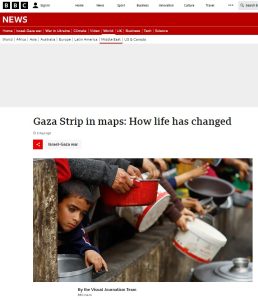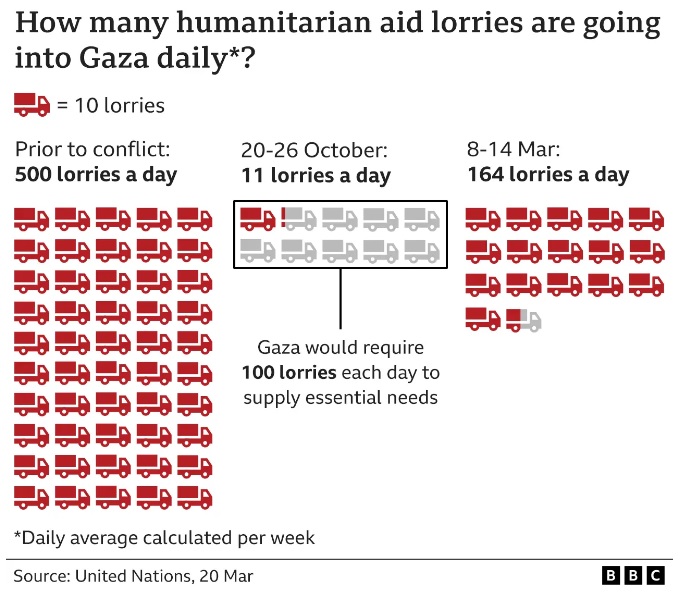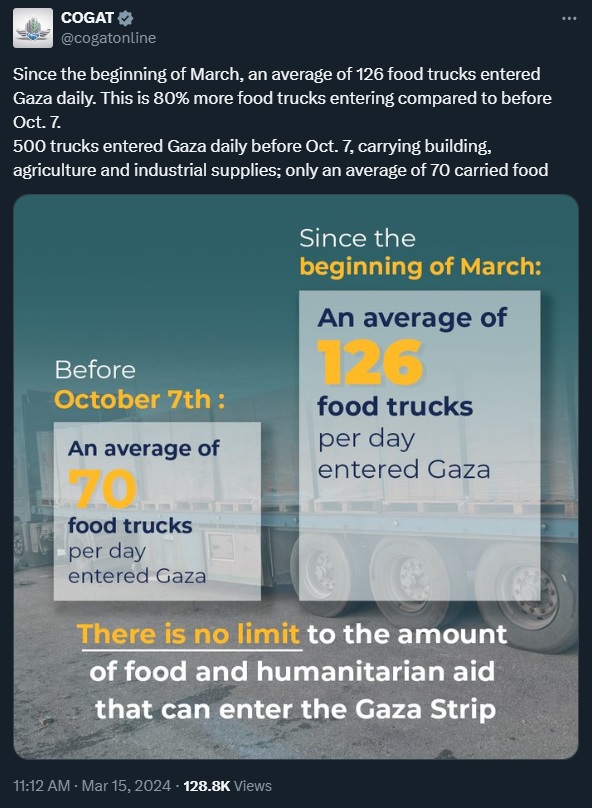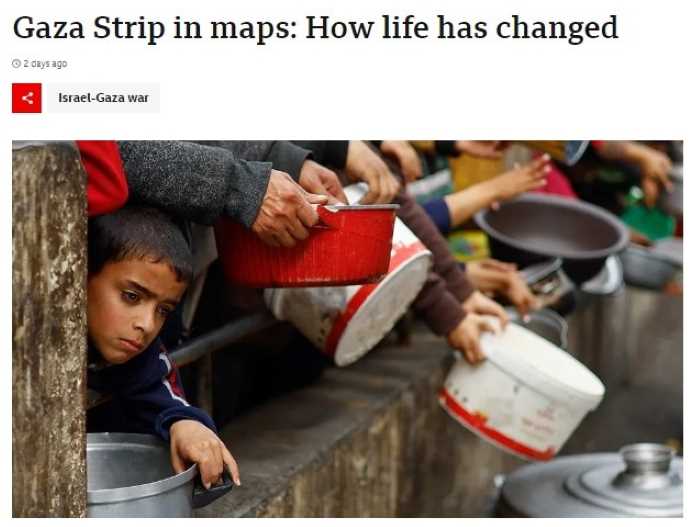On March 22nd the BBC made amendments to a backgrounder which first appeared in 2012 under the title “Life in the Gaza Strip” and was later revamped in July 2014. Currently titled “Gaza Strip in maps: How life has changed”, that item is now credited to BBC News’ Visual Journalism Team.

Readers of the latest version of that backgrounder find the following: [emphasis added]
“People in Gaza are facing desperate living conditions and food shortages as the conflict between Israel and Hamas continues.
Almost two million people – most of the population – are reported to have fled their homes and those who remain in northern Gaza are on the brink of famine, according to the United Nations. […]
And people are starving. Half the population is struggling with catastrophic hunger and famine is imminent in northern parts of Gaza, according to the Integrated Food Security Phase Classification (IPC), the global body responsible for declaring famine.
Save the Children says families are struggling to find enough food and water and children are dying because of malnutrition and disease.
Even before the current conflict, about 80% of the population of Gaza was in need of humanitarian aid. Aid deliveries halted at the start of the latest conflict have resumed, but at much lower levels – with about 164 aid lorries a day crossing into southern Gaza from Egypt.”
As readers may recall, just last month the BBC had to correct two reports which similarly wrongly claimed that humanitarian aid is only entering the Gaza Strip via Egypt:
BBC NEWS WEBSITE COVERAGE OF RAFAH HOSTAGE RESCUE
Readers then find the following graphic:

Given that the text prior to that graphic relates exclusively to “food shortages”, “hunger and famine” and “malnutrition” and with that reference to “much lower levels” of aid, readers would no doubt understand that the 500 lorries a day which entered the Gaza Strip before October 7th 2023 carried food. They would therefore be likely to understand that – given the graphic’s portrayal of an average of 164 lorries a day between March 8th and March 14th, there has been a 67.2% reduction in the amount of food aid entering the Gaza Strip.
That, however, is not the case.
As clarified by COGAT (and supported by UN data) on average, only 70 of the 500 trucks a day which entered the Gaza Strip before October 7th were carrying food:

In other words, the number of trucks transporting food has actually increased from an average of 70 a day to an average of 126 a day.
The BBC’s report continues:
“The World Food Programme says that addressing the simple food needs would require at least 300 trucks a day to enter Gaza and distribute food.
Agencies say distribution is hampered by the lack of infrastructure as the area endures intense bombardment, movement restrictions, interrupted communications and fuel shortages.
There have also been reports of crowds looting aid lorries.”
As we see, the BBC chose once again to conceal from its audiences the highly relevant issue of Hamas’ theft of humanitarian aid and the sale of stolen donated food on the black market by both Hamas and criminal gangs.
The significance of that chosen BBC framing is not only its failure to accurately inform audiences but also its propagation of a narrative that Hamas itself is trying to promote in order to advance its own interests.
Related Articles:
BBC’S GAZA STRIP BACKGROUNDER CLAIMS HAMAS RULE ENDED SIX YEARS AGO
BBC’S ‘LIFE IN THE GAZA STRIP’ BACKGROUNDER NOT FIT FOR PURPOSE





